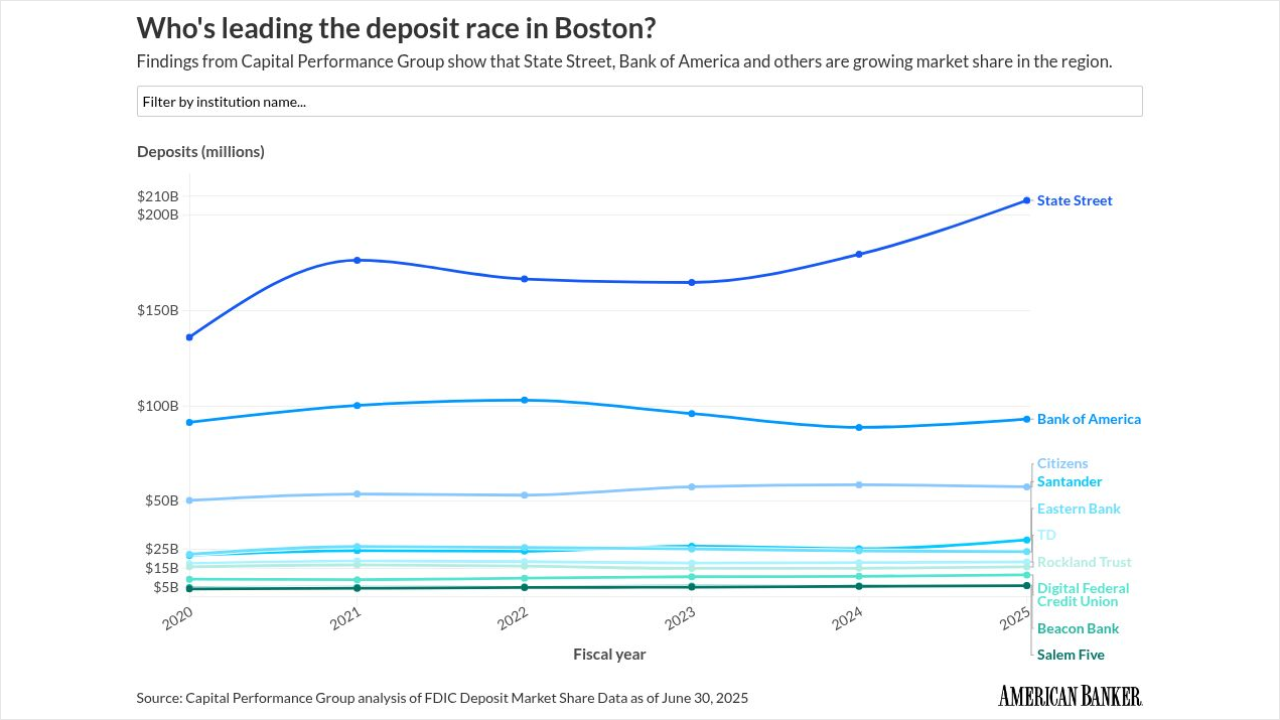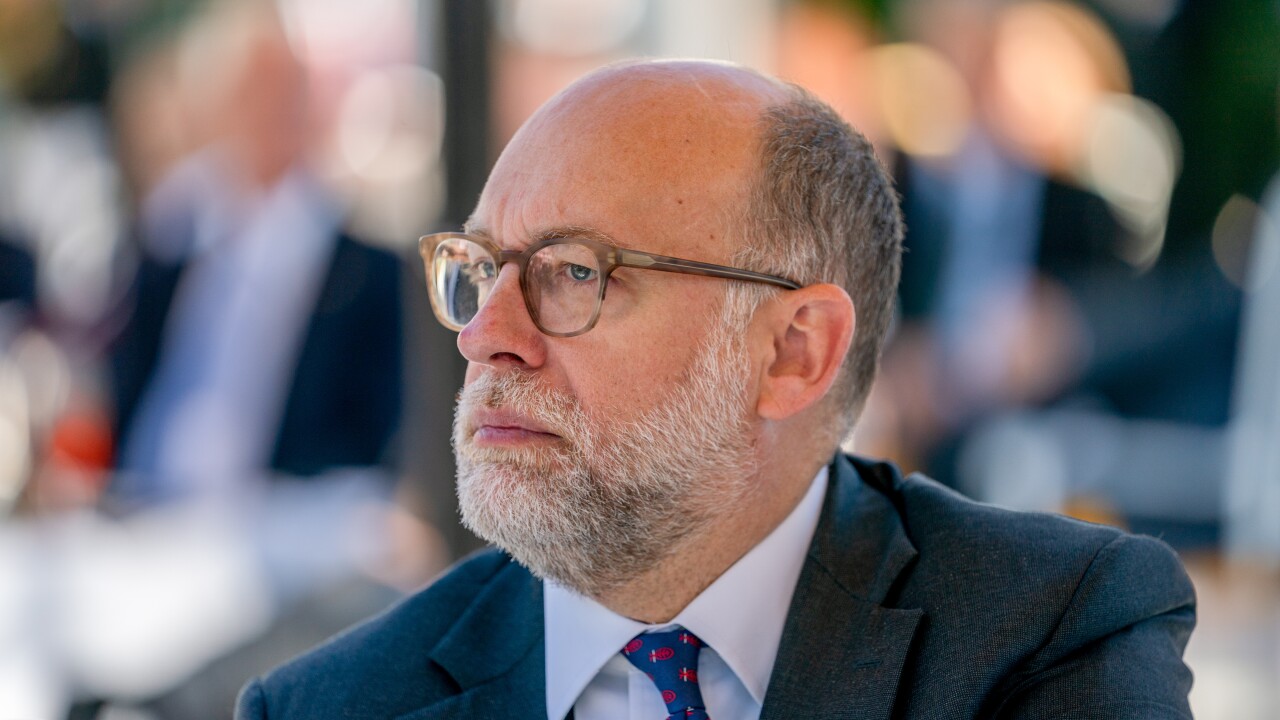Steven G. Boehm, president of Wachovia Card Services, has 19 years experience. He joined Wachovia (then First Union) in 1992. Before assuming his current role in November 2005, Boehm spent 10 years leading Wachovia's contact center organization. Before that, he was chief operating officer for Wachovia's previous credit card business, which the bank sold to MBNA Corp. in 2000. Boehm also worked for Visa USA in sales, account-management and technology customer-service leadership roles. He has a bachelor's degree in business administration from James Madison University and a master's degree in business administration from George Mason University.
Seventeen months have passed since Wachovia Corp. launched its own, in-house credit card program under the direction of Steven G. Boehm, president of Wachovia Card Services.
Wachovia's return to credit card issuing came after its chief competitor, Bank of America Corp., acquired MBNA in early 2006. Both Wachovia and BofA are based in Charlotte, N.C.
Wachovia launched its in-house card initiative to the public in July 2006 after giving its employees a two-week head start so they could get accustomed to the program and test the systems. The program, marketed solely to former MBNA cardholders from Wachovia and to existing bank customers, now boasts more than 1.3 million cardholders and receivables that exceed $1.8 billion.
To help spur card activity, Wachovia offers a single, integrated loyalty program called Wachovia Possibilities Rewards that caters to consumer, small-business and commercial customers. The bank enables cardholders that fall into different customer categories to earn rewards regardless of the type of card they use, including the bank's debit cards.
Cards&Payments Editor-in-Chief Jeffrey Green spoke with Boehm recently to gather insight into the complexities of launching a credit card program and his views on how best to position a new card program in a highly competitive card market.
Q: Wachovia sold its original in-house credit card program to MBNA in 2000. What was the reason for selling it?
A: We had a couple of pretty major events that were challenging us financially. We felt we needed to part with the program to help replenish some reserves to make up for the Money Store, a subprime lender that was creating a financial hardship for the company. Selling the card business was a way to help wipe the slate clean. (First Union, which merged with Wachovia and took on the Wachovia name, bought the Money Store in 1998 but essentially shut it down in 2000.)
Q: Why launch a new in-house program from scratch instead of looking for a new issuing partner?
A: We realize that credit cards are just part of broader payments business that our customers think about when using money to manage their life situations and choices. We felt aligning with a third party would not enable us to integrate the businesses in the company we felt were necessary to integrate. We just didn't think it was feasible that a third party could do that as was well as we could.
Q: Instead of bidding for MBNA, Wachovia bought mortgage lender Golden West Financial Corp. for $26 billion. With the mortgage industry in a credit crisis, any regrets that Wachovia did not instead go after an existing card issuer, such as MBNA or even Capital One?
A: I don't think so. Our CEO Ken Thompson is on the record that the MBNA card business was priced at a premium that we didn't find attractive. We felt the decision was correct then, and we still do today.
Q: How did you go about planning an in-house program?
A: We first decided what our value proposition was going to be. Then we extrapolated from that the type of organization that was needed to do what we wanted to do. We did a lot of research and found that a lot of consumers didn't like some of the practices that were going on in the industry, such as deceptive fees and pricing. We took a position that we were going to have our pricing be very customer-friendly. We don't do universal default. We make it harder to get into penalty pricing and easier to get out of penalty pricing than our major competitors. We also give 100% of customers a fee waiver for their first past due and/or over-limit situation every 12 months. We view them first as Wachovia customers and second as card customers.
Q: What rewards have worked best thus far?
A: Gift cards, merchandise and travel. That's what customers are asking for. We use Visa's rewards platform, but we run our own version of Visa Extras in terms of our redemption approach for combining points and our rewards catalog. Those are unique to us.
Q: What surprises did you have to overcome in the process?
A: Having been out of the card business for a number of years, there were some things that were very similar, such as the degree of marketing complexity and the amount to which risk underwriting was involved. These things had become much more sophisticated, so we invested heavily in our business-analytics function to make sure the decisions we were making were very quantitatively based.
Q: Wachovia initially has grown its card business by targeting existing customers through mailings and branch promotions. What future methods do you anticipate using to expand your portfolio?
A: We're pretty comfortable with targeting Wachovia customers, between the banking and brokerage aspects of the company. For the time being we're quite comfortable with that. We'll explore where we might want to go beyond that at some future date.
Q: What are your views concerning national direct mailings?
A: We use direct mail, though not in the same way as others. We use it as a way to put a highly targeted offer in front of a very specific customer. But unlike in the past where that might have been 90% of the marketing strategy, it's now just one component of a multifaceted customer-contact strategy that also includes the Internet, telephone and person to person.
Q: From which other areas of the bank have you produced the best cross-selling to grow your card-account base?
A: Through our general offices and contact centers. We have developed some specific cross-selling protocols that we use for our banking and contact centers. Those have been the most effective in terms of placing an offer in front of a prospective customer.
Q: Wachovia chose Total System Services Inc., or TSYS, to process its cards. Why that processor, or why not process in-house?
A: In terms of in-house, the reason we didn't do it was because of scale. You need scale to do processing efficiently. We looked at TSYS and its competitors, and we liked its technology and its relationship-management processes better. TSYS just fit better with the way we want to do business.
Q: How directly does Wachovia's debit card program interact with its credit card program?
A: I'm responsible for both. Also, a lot of customers like reward programs. We operate the third-largest debit card program in the U.S., so we decided to let customers earn points for both debit and credit and for using either retail or small-business cards. They can combine them to earn and redeem points.
Q: What effect might MasterCard and Visa going public have on your card operations?
A: None, really. Going public has or will improve their access to the capital markets and has them thinking of doing business on commercial terms, which is the field we play on. That will make them more-focused providers. We like that.
Q: Do you anticipate interchange rates falling because of merchant and congressional pressures on the card brands as well as growing competition from alternative payment options?
A: All pricing structures in every industry are under pressure. I'm not in the business of predicting interchange for the industry, but the value of the payment system that issuers participate in provides an ease to commerce for merchants and consumers around the world. It has great value. Having said that, that doesn't necessarily mean that prices won't change.
Q: Last year, Wachovia and GE Money partnered in a commercial and purchasing card program. Why didn't Wachovia go it alone?
A: Our relationship with GE is the closest thing to an ideal partnership that I've come across. We needed access to GE's product sophistication and information-reporting tools, and GE was intrigued by our distribution access to commercial middle-market customers. So there was value in the partnership for both companies.
Q: How well are Wachovia's commercial card and small-business card programs doing?
A: We launched the commercial card in February of this year, and we launched the small-business product in May. We're not talking externally yet about our performance, but we're a lot more pleased with the results we're seeing in commercial card than small-business, probably because we've been in it a little longer.
Q: Any advice for other banks considering launching their own card programs or taking them in-house?
A: Be clear about the game you intend to play. Don't automatically assume that you should be better at a game that someone else has decided to play. If you decide on a strategy where scale matters and you have no scale, you're dead. Make sure you're clear about your goals and you're clear about what you want to do as a company.
Q: Wachovia does not now issue contactless cards. Are there plans to do so in the near future?
A: No. I don't really see the advantage near-term. Near Field Communication technology is interesting, but it is important that you have a contactless card with the right application for that. An NFC chip in a plastic card, in and of itself, has little incremental value to customers.
Q: Will plastic become obsolete as card information gets incorporated into mobile devices, such as cell phones?
A: Obsolete is an interesting choice of words. I've been in financial services for over 25 years, and we've been talking about the cashless and checkless society the entire time. I do believe plastic payment cards and other payment devices will coexist for some time to come.
Q: If cards do fade away, how will brands compete?
A: We'll compete in ways very similar to the ways we compete today. Our brand stands for the service, trust and confidence consumers need to have. That won't change when the payment form factor changes.
Q: What changes that occur over the next 10 years do you believe will affect the credit card market the most?
A: The demographic shift will be profound. All the data we look at say younger customers who grow up with the Internet, mobile phones and payment cards have really thought of debit as their first choice. So my view is there will be a convergence of payment options with customers always being in control over whether they spend their money or the bank's money. The potential is there to offer a variety of services, but in a totally different service model than what we can conceive of today.
(c) 2007 Cards&Payments and SourceMedia, Inc. All Rights Reserved.
http://www.cardforum.com http://www.sourcemedia.com
-
After buying the failed Silicon Valley Bank, the Raleigh-based regional joined a growing number of banks fighting to serve Boston's tech startups, life sciences entrepreneurs and fund investors.
2h ago -
Now that the Consumer Financial Protection Bureau has refused to request funding from the Federal Reserve System, many experts see the case making its way to the Supreme Court.
November 27 -
The two regional banks, which are combining in a merger of equals, had previously said they expected to complete the deal sometime in the first quarter of 2026.
November 26 -
The bank is a step closer to having its own U.S. dollar-pegged cryptocurrency. It could become the first major financial institution to issue a stablecoin.
November 26 -
Recent high-profile ethics violations by senior Federal Reserve officials, including new revelations concerning stock trades by former Fed Gov. Adriana Kugler, have sparked debate over the effectiveness of the central bank's oversight, even as some observers stress such cases remain rare.
November 26 -
The Swedish financial technology firm issued its first stablecoin and signed a gift card distribution deal with BlackRock. Also, EMVCo is examining AI's impact on processing and more in the American Banker global payments and fintech roundup.
November 26





